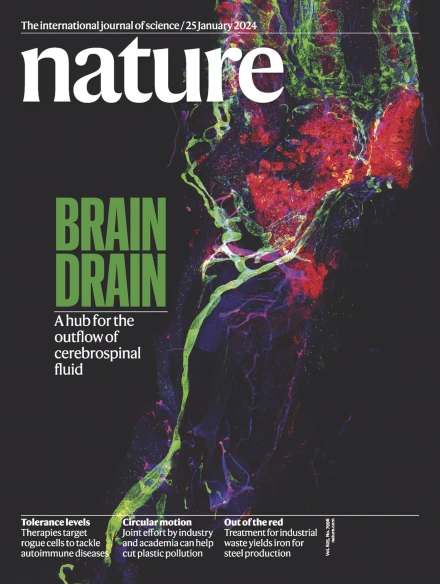Prolonged persistence of mutagenic DNA lesions in somatic cells
IF 48.5
1区 综合性期刊
Q1 MULTIDISCIPLINARY SCIENCES
引用次数: 0
Abstract
DNA is subject to continual damage, leaving each cell with thousands of individual DNA lesions at any given moment1–3. The efficiency of DNA repair means that most known classes of lesion have a half-life of minutes to hours3,4, but the extent to which DNA damage can persist for longer durations remains unknown. Here, using high-resolution phylogenetic trees from 89 donors, we identified mutations arising from 818 DNA lesions that persisted across multiple cell cycles in normal human stem cells from blood, liver and bronchial epithelium5–12. Persistent DNA lesions occurred at increased rates, with distinctive mutational signatures, in donors exposed to tobacco or chemotherapy, suggesting that they can arise from exogenous mutagens. In haematopoietic stem cells, persistent DNA lesions, probably from endogenous sources, generated the characteristic mutational signature SBS1913; occurred steadily throughout life, including in utero; and endured for 2.2 years on average, with 15–25% of lesions lasting at least 3 years. We estimate that on average, a haematopoietic stem cell has approximately eight such lesions at any moment in time, half of which will generate a mutation with each cell cycle. Overall, 16% of mutations in blood cells are attributable to SBS19, and similar proportions of driver mutations in blood cancers exhibit this signature. These data indicate the existence of a family of DNA lesions that arise from endogenous and exogenous mutagens, are present in low numbers per genome, persist for months to years, and can generate a substantial fraction of the mutation burden of somatic cells. Persistent DNA lesions can occur throughout the human lifespan and can remain in the genome of affected cells for several years and generate a substantial proportion of the mutational burden.


体细胞中突变性DNA损伤的长期持续
DNA受到持续的损害,在任何给定的时刻,每个细胞都会留下数千个单独的DNA损伤。DNA修复的效率意味着大多数已知类型的损伤都有几分钟到几小时的半衰期,但DNA损伤能持续更长时间的程度仍然未知。在这里,使用来自89个供体的高分辨率系统发育树,我们在血液、肝脏和支气管上皮5、6、7、8、9、10、11、12的正常人类干细胞中发现了818个DNA损伤引起的突变,这些损伤持续存在于多个细胞周期中。在暴露于烟草或化疗的供体中,持久性DNA损伤发生率增加,具有独特的突变特征,表明它们可能是由外源性诱变剂引起的。在造血干细胞中,持续的DNA损伤,可能来自内源性来源,产生特征性突变特征SBS1913;在一生中稳定发生,包括在子宫内;平均持续2.2年,其中15-25%的病变至少持续3年。我们估计,平均而言,一个造血干细胞在任何时候都有大约8个这样的病变,其中一半会在每个细胞周期中产生突变。总体而言,16%的血细胞突变可归因于SBS19,血癌中类似比例的驱动突变也表现出这一特征。这些数据表明,存在一个由内源性和外源性诱变剂引起的DNA损伤家族,每个基因组的数量很少,持续数月至数年,并且可以产生体细胞突变负担的很大一部分。
本文章由计算机程序翻译,如有差异,请以英文原文为准。
求助全文
约1分钟内获得全文
求助全文
来源期刊

Nature
综合性期刊-综合性期刊
CiteScore
90.00
自引率
1.20%
发文量
3652
审稿时长
3 months
期刊介绍:
Nature is a prestigious international journal that publishes peer-reviewed research in various scientific and technological fields. The selection of articles is based on criteria such as originality, importance, interdisciplinary relevance, timeliness, accessibility, elegance, and surprising conclusions. In addition to showcasing significant scientific advances, Nature delivers rapid, authoritative, insightful news, and interpretation of current and upcoming trends impacting science, scientists, and the broader public. The journal serves a dual purpose: firstly, to promptly share noteworthy scientific advances and foster discussions among scientists, and secondly, to ensure the swift dissemination of scientific results globally, emphasizing their significance for knowledge, culture, and daily life.
 求助内容:
求助内容: 应助结果提醒方式:
应助结果提醒方式:


